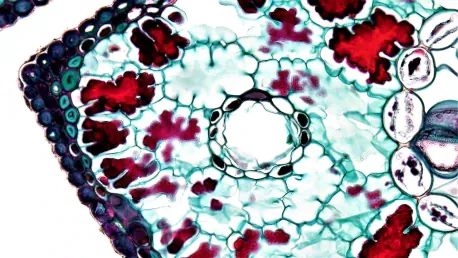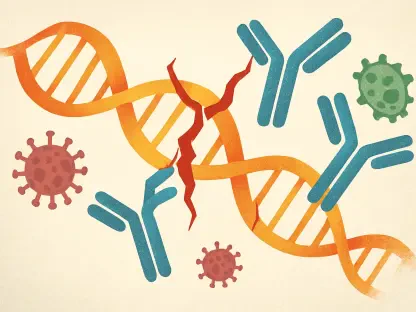Neutrophils, a type of white blood cell, are essential players in the immune system, responsible for responding to infections and inflammation. Their ability to migrate to sites of infection is crucial for effective immune responses. However, the behavior of neutrophils can be influenced by various factors, including the pH levels of their environment. This article explores how pH levels affect neutrophil migration using advanced microfluidic devices, which allow precise control and simulation of different pH conditions.
The Role of Neutrophils in the Immune System
Importance of Neutrophil Migration
Neutrophils are the first responders to infection sites, where they perform critical functions such as phagocytosis, degranulation, and the release of neutrophil extracellular traps (NETs). These processes are essential for neutralizing pathogens and preventing the spread of infection. Their migration is guided by chemotactic signals, which direct them to areas of tissue damage or infection. Understanding the factors that influence neutrophil migration is vital for comprehending immune responses and developing therapeutic strategies. This is particularly important because improper neutrophil function can lead to inadequate immune responses or excessive inflammation, both of which can have detrimental effects on health.
Another crucial aspect of neutrophil migration is its role in the early stages of the immune response. When an infection occurs, neutrophils are among the first immune cells to arrive at the site, often within hours. They not only combat the infection directly but also create an environment that attracts other immune cells, amplifying the immune response. Studying how pH levels affect this migratory behavior can provide insights into optimizing immune responses in various medical contexts, from acute infections to chronic inflammatory diseases.
pH Variations in Pathological Conditions
The pH of human tissues is typically maintained between 7.0 and 7.4. However, in pathological conditions such as inflammation, infection, and cancer, the extracellular environment can become more acidic. These pH changes can significantly impact cellular functions, including the behavior of neutrophils. Investigating how pH variations affect neutrophil migration can provide insights into immune responses under different pathological states. For instance, in tumor microenvironments where acidic pH is common, understanding neutrophil migration could aid in developing effective cancer immunotherapies.
In addition to cancer, various other conditions can alter the pH of tissues. During severe infections, for example, the affected area may become more acidic due to the metabolic activity of pathogens and the immune response itself. Chronic inflammatory diseases, such as rheumatoid arthritis, also feature altered pH levels in the inflamed tissues. Each of these contexts presents a unique set of challenges for neutrophil function, making it critical to study how pH influences their migration and activity. By understanding these mechanisms, researchers can better predict neutrophil behavior in various diseases and potentially develop pH-targeted therapies to enhance immune responses.
Microfluidic Devices: A Tool for Studying Cell Behavior
Advantages of Microfluidic Devices
Microfluidic devices offer a sophisticated platform for studying cell behavior under controlled conditions. These devices can precisely manipulate environmental factors such as pH, temperature, and chemical gradients, closely mimicking in vivo conditions. This level of control is challenging to achieve with traditional cell culture methods, making microfluidic devices invaluable for cellular research. The ability to create stable and reproducible pH gradients is particularly beneficial for studying cellular responses under different environmental conditions, which is crucial for understanding how cells react to changes in their surroundings in a precise and measurable manner.
Moreover, microfluidic devices enable high-throughput experimentation, allowing researchers to study large numbers of cells simultaneously under varying conditions. This not only improves the statistical robustness of the data but also saves time and resources. The miniaturized scale of these devices requires smaller sample volumes, which is particularly advantageous when working with rare or expensive reagents. Additionally, the real-time observation capabilities of microfluidic devices allow for dynamic analysis of cell behavior, providing deeper insights into the temporal aspects of cellular responses. Overall, the precision, efficiency, and versatility of microfluidic devices make them an indispensable tool in modern cellular research.
Design and Functionality of the Microfluidic Device
The microfluidic device used in this study is made of polydimethylsiloxane (PDMS) and features channels that allow the flow of media and gases. By adjusting the concentrations of dissolved gases, such as CO2, researchers can create stable pH gradients within the device. This setup enables the detailed study of neutrophil migration under various pH conditions, providing a deeper understanding of their behavior. The PDMS material is biocompatible and transparent, facilitating the observation of cellular interactions without interference, making it ideal for such advanced studies.
The device’s design also includes precise control mechanisms that allow for the adjustment of gas concentrations in real time. This capability is crucial for creating dynamic pH environments that can change in response to experimental needs. Additionally, the device incorporates multiple channels that can host different cell types or media, enabling the study of interactions between various cellular players under controlled conditions. The combination of these features creates a versatile platform for investigating complex cellular behaviors in a highly controlled and reproducible manner. Such detailed analysis is critical for advancing our understanding of neutrophil migration and its regulation by pH.
Experimental Setup and Methodology
Creating pH Gradients
To simulate different pH environments, the microfluidic device is designed to control the concentration of dissolved CO2. Higher CO2 levels result in lower pH (more acidic conditions), while lower CO2 levels lead to higher pH (more alkaline conditions). The relationship between CO2 concentration and pH is carefully calibrated through theoretical analysis, numerical simulation, and experimental measurements. This precise calibration ensures that the pH gradients produced within the device accurately reflect the conditions found in various physiological and pathological states.
The process involves introducing CO2 gas at controlled rates into the microfluidic channels, where it dissolves in the cell culture media, thereby altering the pH. Researchers use sensitive pH indicators and sensors to monitor and verify the pH levels within the device continuously. This rigorous approach ensures that the experimental conditions remain consistent and reproducible, allowing for accurate assessment of neutrophil behavior in response to different pH levels. The ability to finely tune the pH conditions within such a compact and controlled environment represents a significant advancement over traditional cell culture methods, which often lack this level of precision.
Measuring Neutrophil Migration
Neutrophil-like HL-60 cells are introduced into the microfluidic device, and their migration is observed under varying pH conditions. The cells’ speed and directionality are recorded and analyzed to determine how pH levels influence their behavior. This experimental setup allows for precise control and observation of neutrophil migration in response to pH changes. High-resolution imaging techniques, combined with advanced software for tracking cell movement, facilitate detailed analysis of the cells’ migratory patterns over time.
The experimental protocol includes multiple repetitions to ensure statistical reliability and to account for any variations in cell behavior. Researchers also incorporate control experiments to compare the results obtained under different pH conditions, providing a comprehensive understanding of how pH influences neutrophil migration. Data analysis involves quantifying various parameters such as migration speed, total distance traveled, and directional persistence, offering a holistic view of how these cells respond to changes in their environment. This methodological rigor ensures that the findings are robust and can be confidently used to infer the effects of pH on neutrophil behavior.
Results and Observations
Migration Speed and pH Levels
The study finds that neutrophil-like HL-60 cells exhibit different migration speeds depending on the pH of their environment. Higher pH levels (alkaline conditions) are associated with increased migration speed, while lower pH levels (acidic conditions) result in slower migration. These findings highlight the sensitivity of neutrophil migration to pH variations. This information is particularly valuable for therapeutic strategies where modulation of pH could enhance or inhibit neutrophil migration depending on the desired outcome, potentially improving treatment efficacy in various pathological conditions.
The observed pH dependency of neutrophil migration suggests that the cells’ motility mechanisms are influenced by the proton concentration in their environment. Higher pH levels may enhance cellular energy production and enzyme activities that drive motility. Conversely, acidic conditions might impair these processes or activate inhibitory pathways, leading to reduced migration speed. These results underscore the importance of maintaining appropriate pH levels in tissues to ensure optimal neutrophil function. Further research could explore the specific molecular pathways involved in this response, providing deeper insights into the intracellular mechanisms affected by pH changes.
Directionality of Migration
Despite changes in migration speed, the study does not observe clear directional migration of neutrophil-like cells along the pH gradient within the observation period. This suggests that while pH levels influence the speed of migration, they may not necessarily direct the cells’ movement in a specific direction. The lack of pH-induced directionality indicates that other cues, such as chemical signals or physical barriers, are likely required to guide neutrophils to specific sites of infection or tissue damage.
The absence of directional migration in response to pH gradients alone points to the complexity of the signals that govern neutrophil movement. In vivo, neutrophils navigate a multitude of overlapping signals, including chemokines, extracellular matrix components, and varying tissue stiffness. The interactions between these factors and pH might collectively determine the cells’ migration patterns. Understanding these interactions will be crucial for developing targeted therapies that aim to modulate neutrophil migration effectively. The findings highlight the need for comprehensive studies that integrate multiple environmental factors to fully elucidate the mechanisms guiding neutrophil behavior in complex tissue environments.
Influence of Chemical Stimuli
Enhancing Migration with Chemical Stimuli
The presence of chemical stimuli such as formyl-methionyl-leucyl-phenylalanine (fMLP), sodium pyruvate, and cariporide is found to enhance the migration speed of neutrophil-like cells. These stimuli interact with the cells’ signaling pathways, promoting increased motility. However, the pH-dependent nature of migration remains evident even with the addition of these chemicals. This suggests that while chemical signals can boost neutrophil activity, the fundamental influence of pH on cell motility is a critical factor that persists across different conditions, underscoring its relevance in immune response modulation.
The combination of chemical stimuli and pH alterations provides a more comprehensive picture of the factors that regulate neutrophil migration. For instance, fMLP, a potent chemotactic agent, significantly enhances migration speed, yet its effects vary depending on the pH of the environment. Sodium pyruvate, which can serve as an energy source, also boosts cell motility, highlighting the importance of metabolic support in neutrophil function. Cariporide, an inhibitor of the sodium-hydrogen exchanger, illustrates how ion exchange processes interact with pH to regulate cell behavior. By integrating these chemical stimuli into the experimental framework, the study offers valuable insights into the multifaceted regulation of neutrophil migration.
pH-Dependent Variations
The study observes that the enhancement of migration by chemical stimuli varies with pH levels. For instance, the effect of fMLP on migration speed is more pronounced at higher pH levels. This indicates that the interaction between chemical stimuli and pH conditions plays a crucial role in regulating neutrophil behavior. The synergistic effects observed highlight the importance of considering both the chemical and pH context when studying neutrophil migration, as the combinatorial impacts can significantly influence the outcomes compared to each factor alone.
The pH-dependent variations in response to chemical stimuli suggest that the cellular signaling pathways activated by these stimuli are modulated by the proton concentration in the environment. Higher pH levels may enhance the signaling efficiency or receptor sensitivity to chemotactic agents like fMLP, thereby boosting migration speed. Conversely, acidic conditions might dampen these signals, reducing their effectiveness. Understanding these interactions provides a more nuanced view of neutrophil regulation, offering potential strategies for selectively enhancing or inhibiting migration in therapeutic contexts. These findings pave the way for future research into the specific molecular mechanisms underpinning these pH-dependent variations, which could lead to targeted interventions in immune-related diseases.
Implications for Immune Responses
Understanding Pathological Conditions
The findings of this study have significant implications for understanding immune responses in different pathological conditions. Since pH levels can vary in diseases such as cancer and chronic inflammation, understanding how neutrophil migration is affected by these changes can inform the development of new therapeutic strategies. By tailoring treatments to account for the pH environment of diseased tissues, it may be possible to optimize neutrophil function and improve patient outcomes. Moreover, these insights could help in the design of targeted drug delivery systems that exploit pH variations to enhance the efficacy of therapeutic agents.
In cancer, for example, tumors often create an acidic microenvironment that can suppress immune cell activity. By understanding how pH affects neutrophil migration and function, researchers could develop strategies to either neutralize the tumor microenvironment or design neutrophil-based therapies that are effective in acidic conditions. Similarly, in chronic inflammatory diseases, modulating the pH of affected tissues might restore normal neutrophil activity and reduce excessive inflammation. This research also highlights the potential for using microfluidic devices as diagnostic tools to assess neutrophil function in patient samples, providing personalized insights into immune health and disease.
Potential Therapeutic Strategies
By understanding how pH levels influence neutrophil migration, researchers can gain insights that could potentially improve treatment strategies for infections and inflammatory diseases. Such research can lead to the development of therapies that modulate pH levels to enhance immune response efficacy.
In summary, this exploration highlights the importance of environmental conditions like pH in regulating immune cell function and the potential for leveraging this knowledge in medical treatments.









